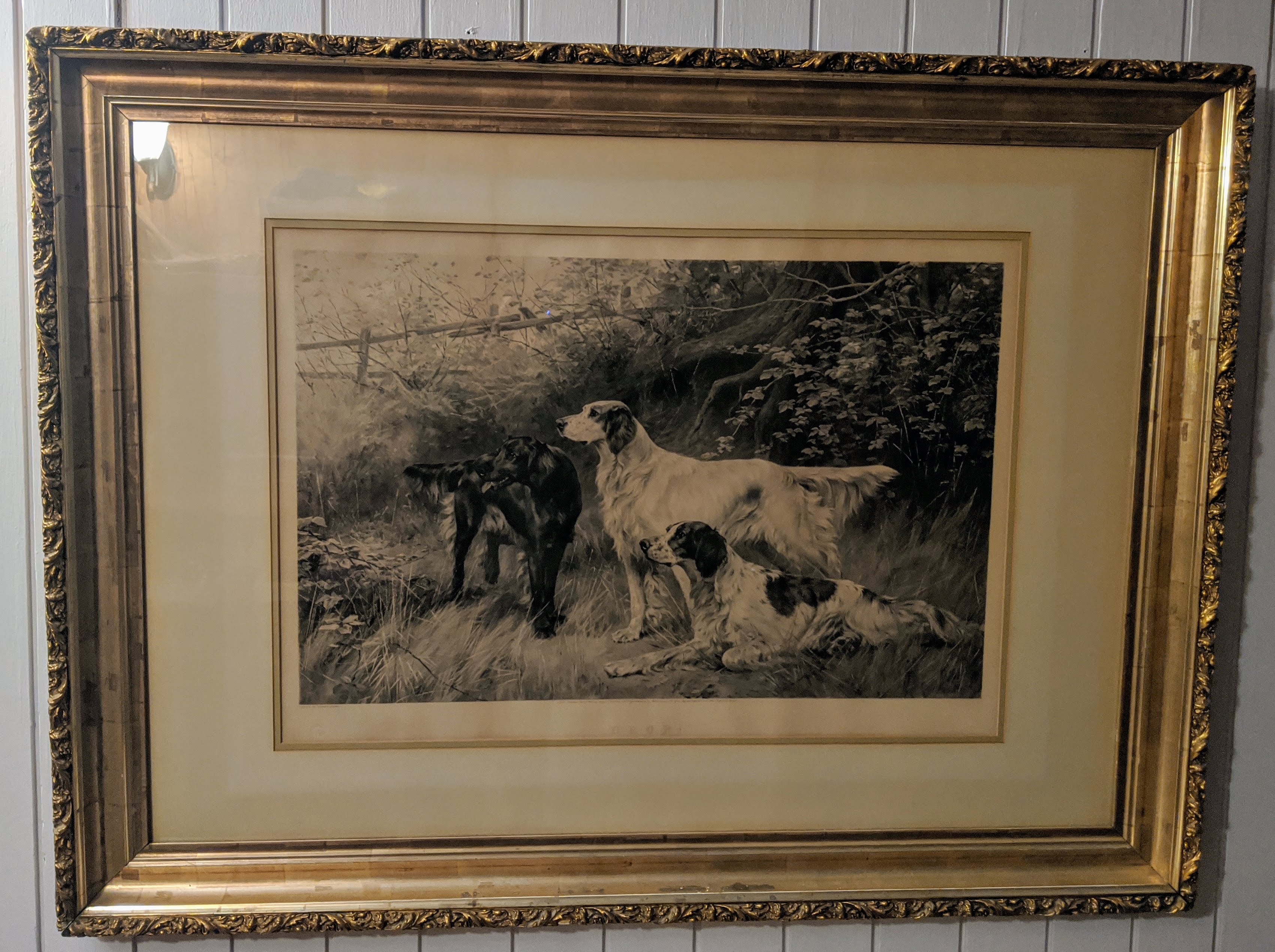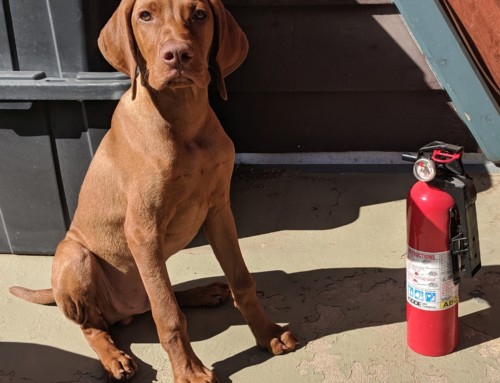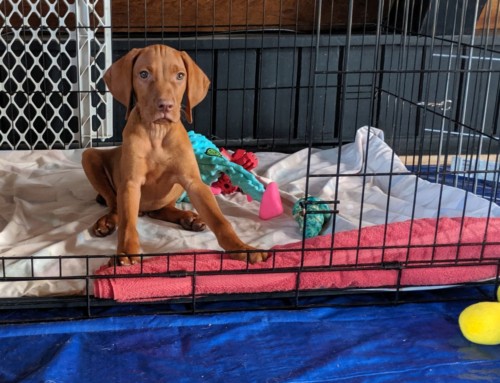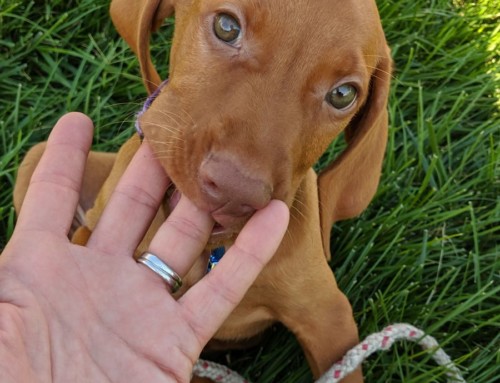DOG TRAINING OFFERED IN-PERSON AND ONLINEOur dog training services are delivered in almost any format that meets your needs. We have GROUP CLASSES at our indoor and outdoor facilities on our farm, ONLINE LIVE STREAMING classes, and SELF-PACED VIDEO-BASED training through our Online Dog Training Course. Our PRIVATE TRAININGS can be done in-home, outside, in public dog-friendly locations, at our facility on our farm, online via phone or video conferencing and through email. |
Zooka, Ed and I made our road trip to California to visit Ed's parents in November 2019. You might have read our post about that trip and our stops along the way. We had planned to bring a trailer back with a few things that his parents wanted to pass along as they are working on downsizing.
While we were helping to clear out his dad's office, we were looking over some of the paintings and prints in the office. There was one large frame that was stashed behind some other furniture. I asked what it was.
Whatever it was, had a poster pasted over it. So after pulling it out from behind other things, we peeled off the poster. My mother-in-law said she had not seen it in quite a long time, but it was some sort of dog/hunting print.
But before we get into the details of the print itself, I asked my mother-in-law, Heidi, to share any history she knew about how the print came to be in her family.
Here is the story Heidi sent me. . .
My grandfather was born in 1884 in Parma, Italy, arriving at Ellis Island Around 1904. He started working in the kitchen of the Waldorf Astoria, working his way up to Maitre d’.i. My grandmother, born 1890, In Italy, arrived here around 1903 and worked in a sewing factory at her young age! They met and married October, 1909.
My mother was born in NYC in November, 1910. My grandfather bought a Cadillac dealership at some point and continued investing in business, until 1929, when they lost their way of life up to that point.
They would have bought the photo/frame between 1914-1926, I would think, because I am pretty sure they did not buy much of anything after the Depression as they struggled in the 1930’s. My grandmother had to take in boarders and sewing to keep the roof over their heads.
They moved here (California) in 1942, 43, bringing the picture and all their belongings from their rock home in New Jersey. All the furniture in this house that was theirs comes from the East Coast. My cousin Norma told me my grandfather loved that picture!
I have lived all my life with the picture. The fake fireplace in the living/dining room was specifically designed so the picture fit above it and had a light shining above. (The light still shines in the same spot!) In those days, that type of picture was often found in homes.
I think the frame, certainly close to 100 years old, is hand made.
So this print was hidden away for a long time because it did not fit with the decor as the times changed. Amazingly, they kept the print and the original frame all these years.
And guess what, I love it! It now hangs in our entryway at our house. What a fascinating piece of history we get to carry on now in our home.
So I wanted to find out more about this print. The artist is Thomas Blinks. While reports vary, it appears he lived from 1853 to 1910. This print is called DROP. The original painting was done in 1893 and the black and white print we have appears to have been printed in 1894. I did some searching online and came up with a fairly detailed history at the Worthington Galleries.
Curious? Read on!
https://worthingtongalleries.com/thomas-blinks/
THOMAS BLINKS SUMMARY
A Victorian painter in London whose specialty was hunting scenes, especially with dogs and horses. Blinks was the foremost Sporting and animal painter of his generation. Thomas Blinks exhibited regularly at the Royal Academy from 1883 to 1910, and filled hunting scene commissions from King George V. Blink’s educational background is unknown, but the artist stated that he learned horse anatomy from observation at the horse auction mart Tattersalls. His painting talent was discouraged by his parents, and he spent some time apprenticed to a tailor. In 1881, he had his first exhibition, which was at the Dudley Gallery. The next year his work was exhibited at the Royal Society of British Artists, and from that time his reputation grew. His specialty was catching animals in motion, such as racing horses and dogs pointing on the hunt. He worked in both watercolor and oils, and his style was highly realistic. He used a polished finish on his canvases, which gave them a formal, professional appearance. Engraver J.B. Pratt reproduced eighty paintings by Blink because of their popular appeal.
THOMAS BLINKS : RENOWNED BRITISH SPORTING ARTIST
Little is written of the Kentish boy Thomas Blinks, one of the greatest the English sporting artists of all time and what is written seems to be is shrouded in incorrect facts.
For the record, the official public records of births and deaths registered in England shows that Thomas Blinks was born in Maidstone, Kent, in the south of England in the autumn of 1853 and not as the books or indices have it, as 1860. to complete the record, Thomas Blinks died in Marlybone, London at the age of 57 in December 1910.
History tells us that Thomas Blinks was to become a very successful London based painter specialising in sporting, canine and equine pictures and in his day, that Thomas Blinks, the artist, was considered to be the best British Victorian painter of canine, equine, sporting subjects and foxhounds and in particular, the hunt that there was.
Sporting subjects in this era curried favour in British high society and as his work excelled, so did his status as an artist.
It is somewhat unfortunate however that he was never commissioned by Queen Victoria or the consort Prince Albert as they were major patrons of the arts, lovers of sporting subjects and huge supporters of Blinks’ peers such as Sir Edwin Landseer. Certainly, given their support, he may have been propelled even more rapidly into the dizzy heights of artist notoriety of the era. Even so, he achieved great status through his acceptance into the ranks of the greats through the Royal Academy whose records show he exhibited 29 major sporting works during the last 27 years of his life, with King George V, Victoria’s successor, becoming a patron and commissioning Blinks to paint the King whilst hunting. Indeed, several times, the King is depicted hunting in Blinks’ works.
One can put the failure if you will, for any massive and immediate recognition of artists such as Thomas Blinks and his contemporary John Emms alongside other canine artists such as Richard Andsell and Arthur Wardle, down to the complete dismissal of such art forms by Sir Joshua Reynolds who was the first president of the Royal Academy.
His utterly and pompously quashed any notion of the possibility of those working in the field of sporting subjects and even still life, from being taken seriously by the British art fraternity and its following socialites by stating;
“Such endeavours are mere copies of nature” further dismissing it; “that neither instruct or ennoble the soul and thus can never ensure the painter a permanent reputation.”
It was no wonder then that these artists had an uphill struggle for success in their time frame.
But Thomas Blinks’ success was down to his unique knowledge and understanding of equine anatomy which was said to come from his regular attendance at Tattersalls where he would sketch and study the horses waiting for auction for hours at a time. Though laughably some galleries biographies indicate he would study the horses ‘racing’ at Tattersalls!
That’s a little difficult, as Tattersalls is the oldest blood-stock auctioneers in the world and the largest in Europe. Founded in 1766 by Richard Tattersall and was an auctioneers and still is. It is not a racecourse.
But Tattersalls of course was not close to Thomas Blinks’ home in Tenterden, Kent. So here is a puzzle to be unraveled indeed.
The first premises occupied by Tattersalls was near Hyde Park Corner, in what was then the outskirts of London. So that would have been a lengthy trip for a young boy of some seventy miles in distance from his family home in Kent.
This Tattersalls issue is a fact which is as puzzling as it is questionable.
Thomas Blinks grew up in Sussex and made his first home in 1877 in Hawkshurst near Cranbrook, Kent with his wife Louisa Anne Winterbottom whom he married on the 11th of April 1874 in Rye, in the county of Sussex, England.
It was here in Hawkshurst where they had their first child together, Lillian. Later two more sons were born to Thomas and Louisa, Harry born 1879 and Alfred born 1885 but by the late 1870’s they had moved and were living in London.
Perhaps the artists own comments relating to his study of horse anatomy at Tattershalls is more in line with his later move to number 1, Hill Road, Marlybone. A London address where he kept a studio from 1878 and close, by comparison to the Tattersalls horse sale premises.
Unless that is, Tatershalls held a stud in the rural area of Kent which he frequented as a boy?
This is a notion which would certainly be more in keeping with such a lengthy jaunt of several hours to the auctions of Tattershalls in London from his country home.
BLINKS LIFE:
Certainly, it is agreed that it was at an early age and by at least his eleventh year that Thomas Blinks was somehow turned towards horsemanship and field sports and one can only conjecture that perhaps his interest and development in his unique art form came from the study of the action of horses that he observed on the gallops, farms and studs which surround his early country environs.
There is no clear indication that the talented and self taught Thomas Blinks received any formal art or draftsman ship training nor a painting apprenticeship at the start of his distinguished career as a sporting artist. On the contrary, his parents Harriot and Thomas were adamant that he take on a proper trade and his father Thomas Blinks senior, a butcher by trade, insisted upon it, as the young Thomas Blinks showed no interest in the family butchery trade. So the young Thomas embarked on a short and fruitless career as a bespoke tailor, working locally which was soon to be scotched with the onset of his own decision to pursue a career in art. A career that his father saw as utterly worthless.
As they say. The rest is history and as record now has it that Thomas Blinks who worked in both water colours and oils and expressed a brilliant natural skill of observation and accuracy of form, first exhibited his paintings at the Dudley Gallery in the year 1881 and then in 1882 at the Royal Society of British Artists. Latterly and more regularly at the Royal Academy from 1883 to 1910.
To this day his paintings are greatly admired for his unique ability to combine an accuracy of observation with a skill for showing freedom of brushwork which he delivered with a technically polished finish. This natural ability, inordinate talent and fresh technique, seems to capture the character and even the inner psychology of the hounds and the sporting dogs he painted and recorded, at work in the field.
Blinks works themselves can be clearly divided into two categories:
1/ The ultra dynamic action packed pictures of hounds in ‘full cry’ like the one above, all in deadly and unrepentant pursuit of an exhausted fox where the viewer is drawn to dozens of individual characterful canines pouring over a fence, a hedgerow or brook. Each is blinkered in dramatic, almost chaotic pursuit and the more portrait like works.
2/ These portrait studies are more subtle, static portraits of working gun dogs, pointers and setters in particular. Each frozen and riveted to the landscape & and terrain of their work.
And it was to the camera, not the sketch book as it used to be, that Thomas Blinks was to turn in the modern era that finally aided him in this work.
COLLECTIONS:
Today, Thomas Blinks’ paintings are represented in the private collection of Her Majesty the Queen, the Leicester Museum and Art Gallery and Preston Manor, Brighton. With as many as 80 of Blinks’ works so popular that they were immortalised as reproductions in various print forms, some being engraved by the pre eminent British engraver Joseph Bishop Pratt.
VALUES:
The values of Thomas Blinks works today can be enormous.
Many of his paintings are exceptionally large in format and were designed to regale the high ceilinged walls of eminent country houses and the fine aristocratic homes of the era and are highly regarded and sought after.
The most expensive Thomas Blinks painting selling to date selling at Christie's Auctions in New York for $470,000.00.
Our goal is to positively impact the lives of as many dogs and their families as we can, in part through our extensive library of video, infographics and text articles. |










Lots of research on your part Sue! Very interesting. The photo is alive and the dogs are exquisite!
Thanks for sharing.
As a suggesting, tape this information on the back of the frame for the next generation!
Ah, good idea!
Wow! That was really interesting.